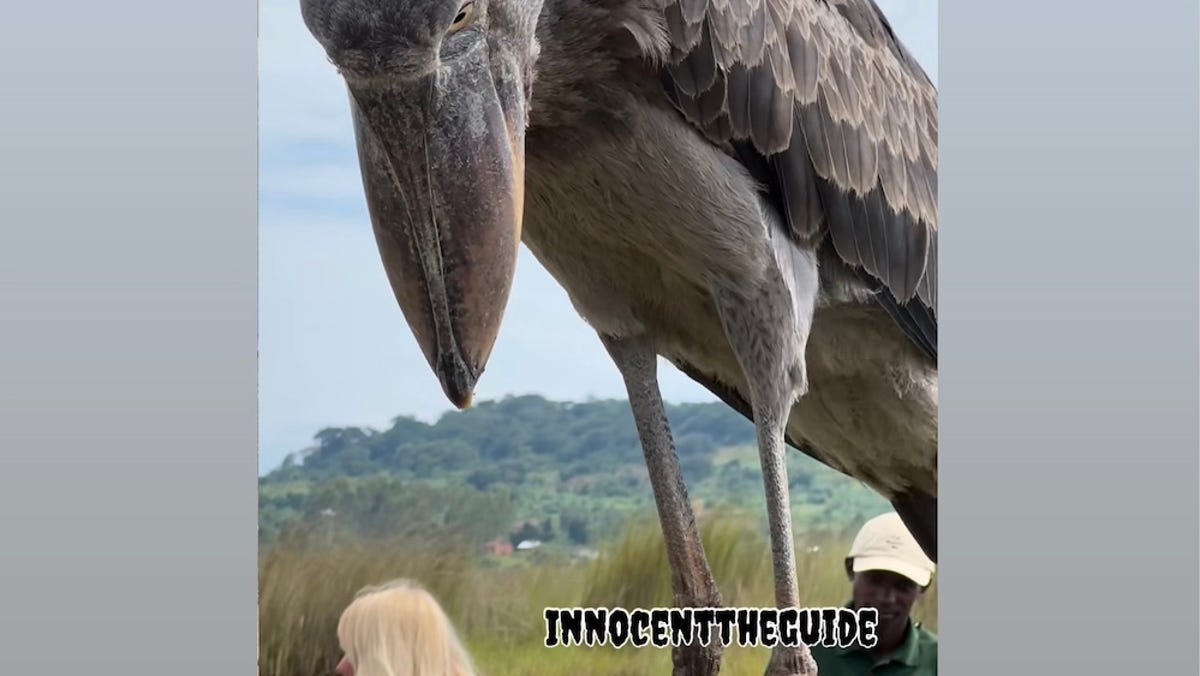Earlier this week we shared footage of an enormous, prehistoric-looking bird that had landed on a tour boat in Uganda.
The striking shoebill seemed to dwarf the tourists and guide, largely because of the way it was photographed.
The tourists remained still and probably were not in danger, however. That’s because shoebills, while they boast razor-sharp beaks that can decapitate fish and even baby crocodiles, are not aggressive toward humans.
But humans represent a significant threat to one of Africa’s most distinctive avian species, whose overall population is only between 5,000 and 8,000 birds. Threats include habitat loss, illegal pet trade, and general disturbance – but also fishing where shoebills are protected.
ALSO: Massive Yukon grizzly bear provides gripping trail-cam moment
That became apparent this week when Mabamba Trips Uganda, which captured the footage of the shoebill on the tour boat, shared the accompanying Instagram post.
The image shows a shoebill entangled by fishing line in a nearby wetlands where, like Mabamba Bay, the species is protected.
Mabamba Trips stated: “During its hunting attempt, the shoebill tried to catch a fish, which was already hooked, and in the process, the hook became lodged in its bill.”
The shoebill was rescued and is being cared for at a zoo. Muhumuza Innocent Braddoco, who guides for Mabamba Trips, updated followers via Facebook:
“Doctors have informed me that the shoebill will remain under treatment for 14 days. It sustained an injury solely to its beak from a hook. I am unable to share photos of it at this time, as it remains under medical attention until the 14-day [quarantine] period has elapsed.”
Shoebills, named for the shape of their bills, are closely related to pelicans and herons. They can stand nearly 5 feet tall and boast wingspans of 7-plus feet. They’re globally listed as “vulnerable” throughout their range in tropical central-eastern Africa.

